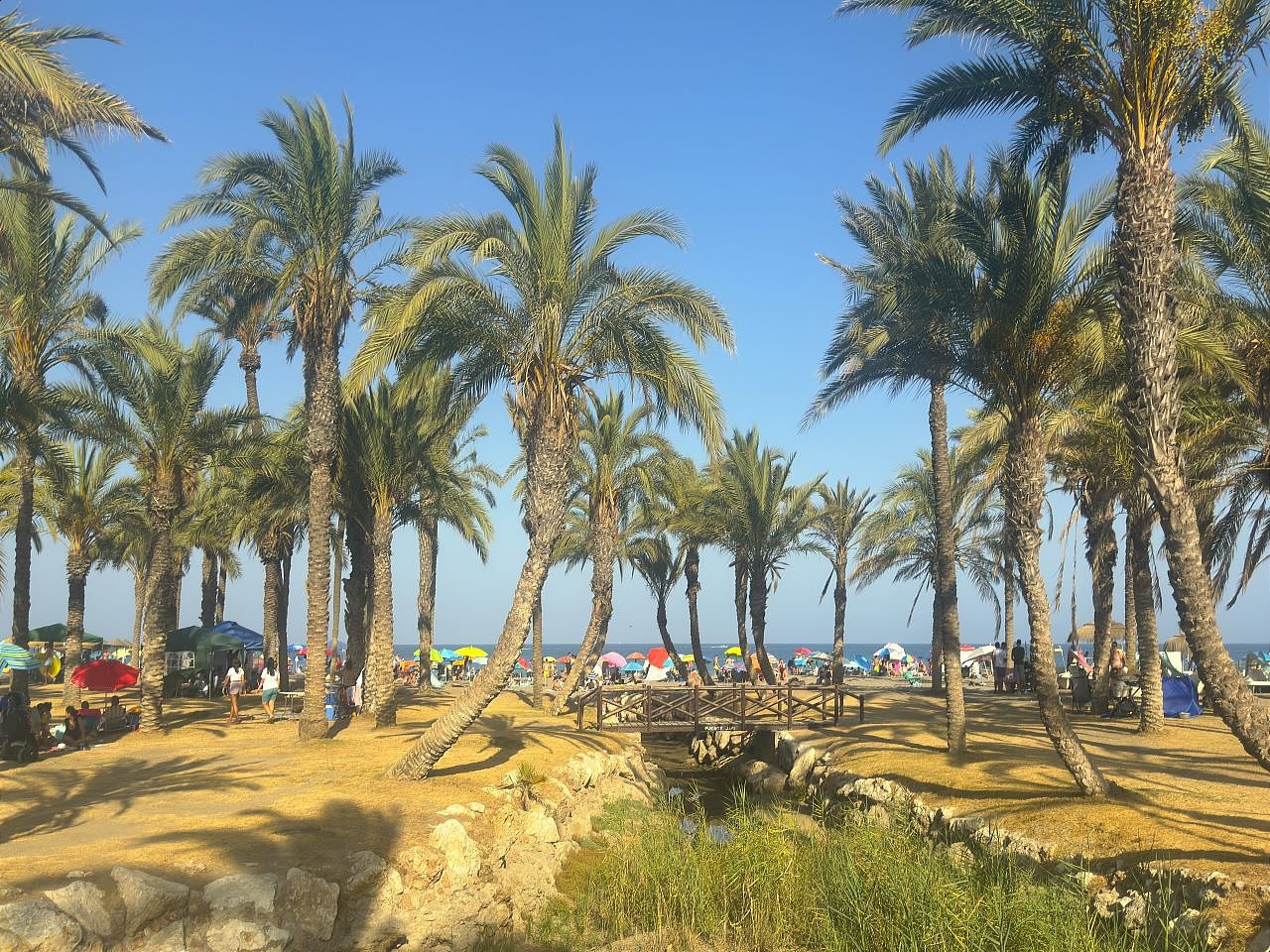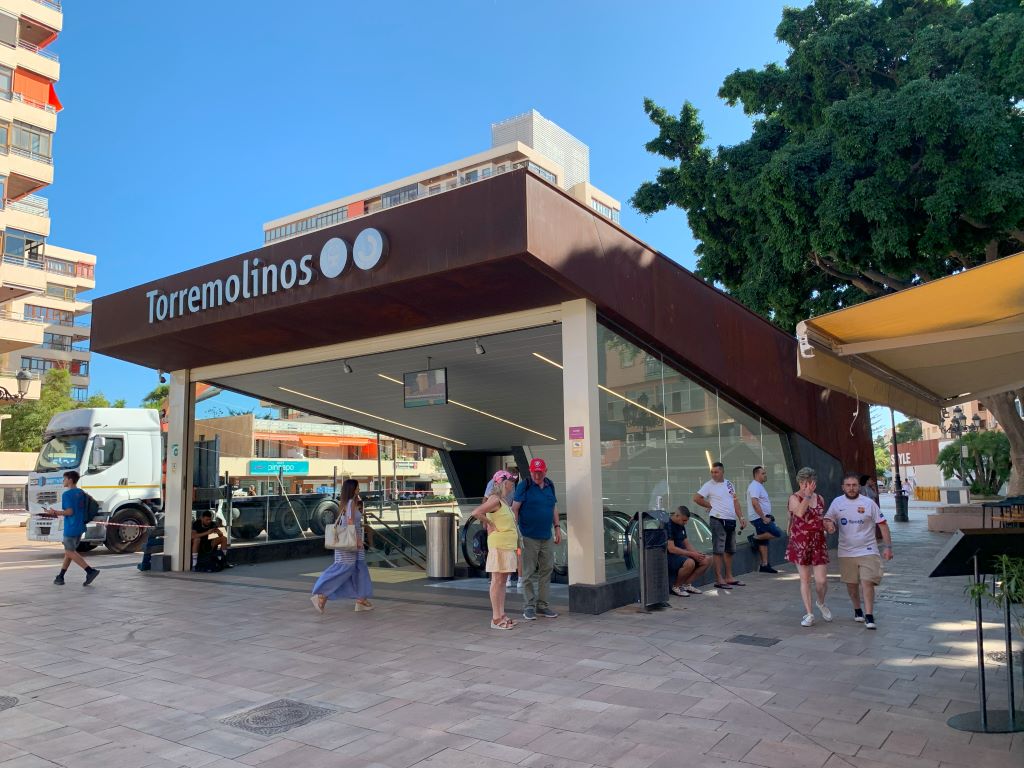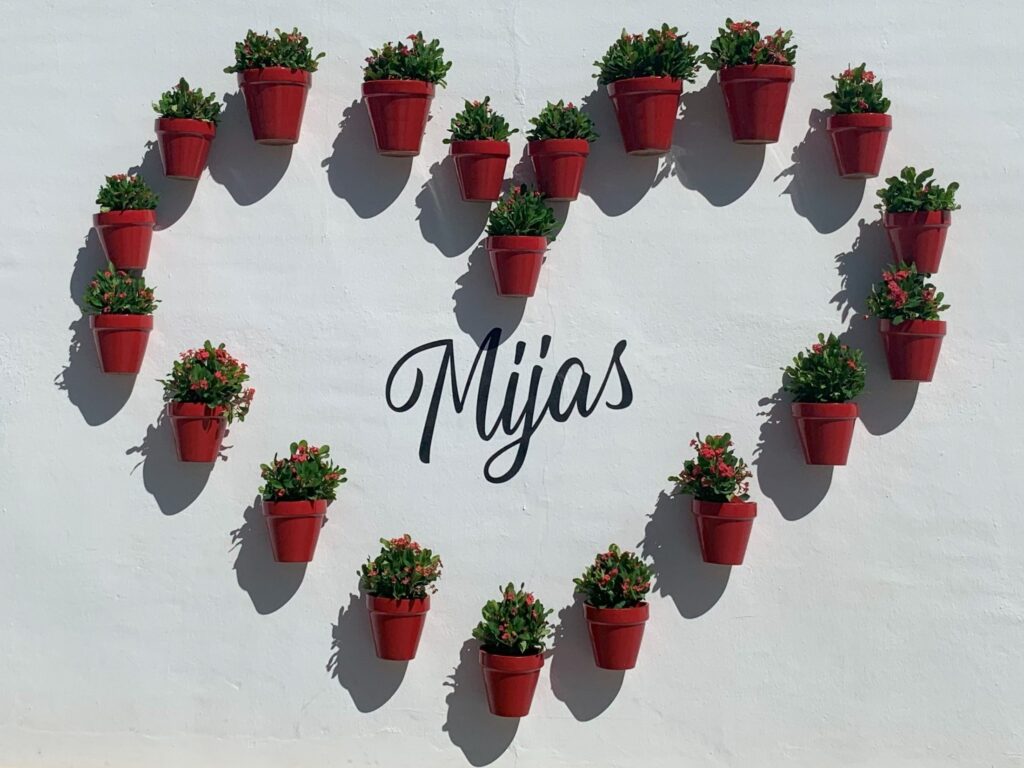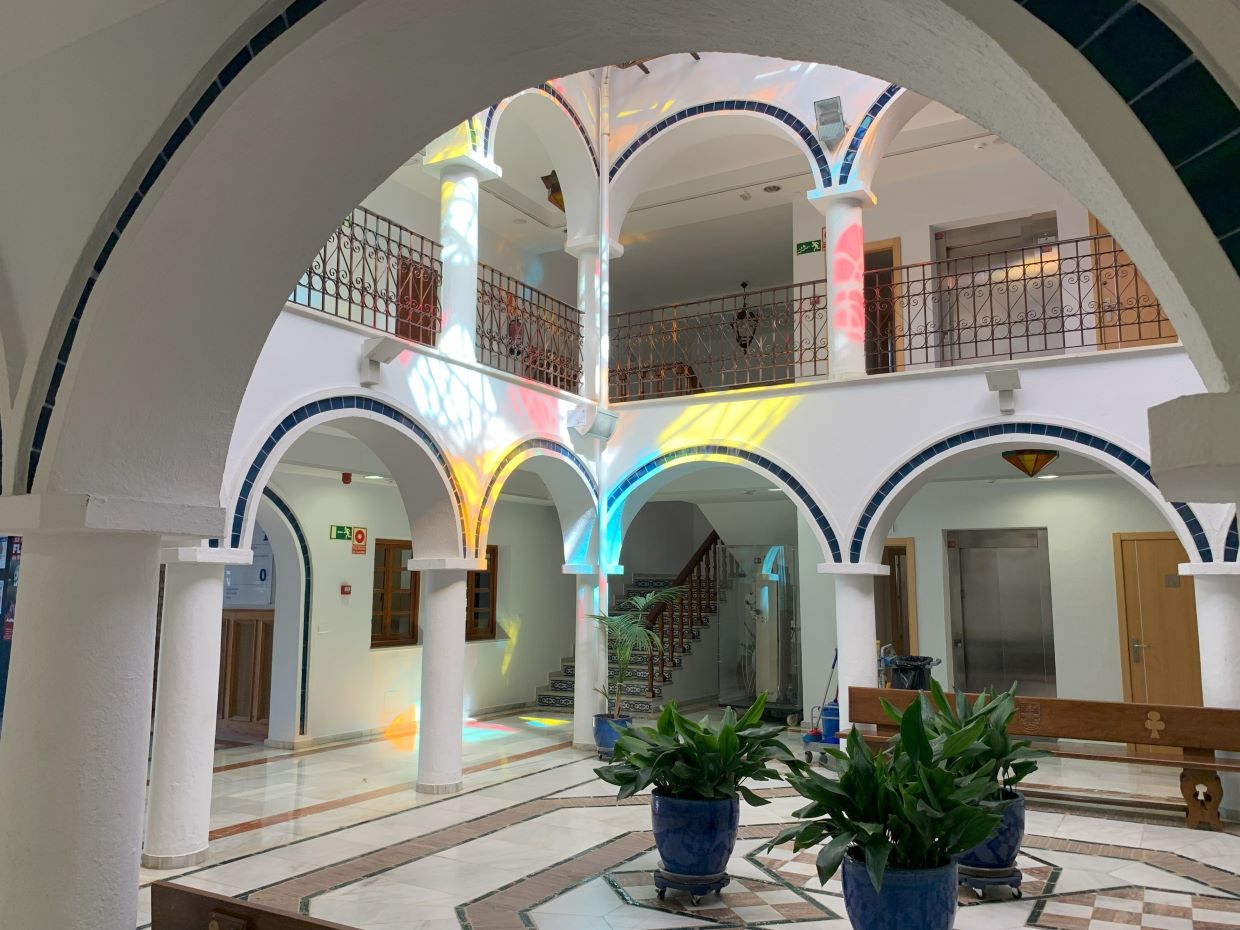September 30, 2024
The Molino de Inca Botanical Garden is my new favorite place to visit in Torremolinos. It is located on the higher part of Torremolinos, in the district of Los Pinares, close to the highway, in an area rich in springs that provide water to the town. For that important reason, the area, which used to house a water powered mill (molino) in the past, became the botanical garden it is today.
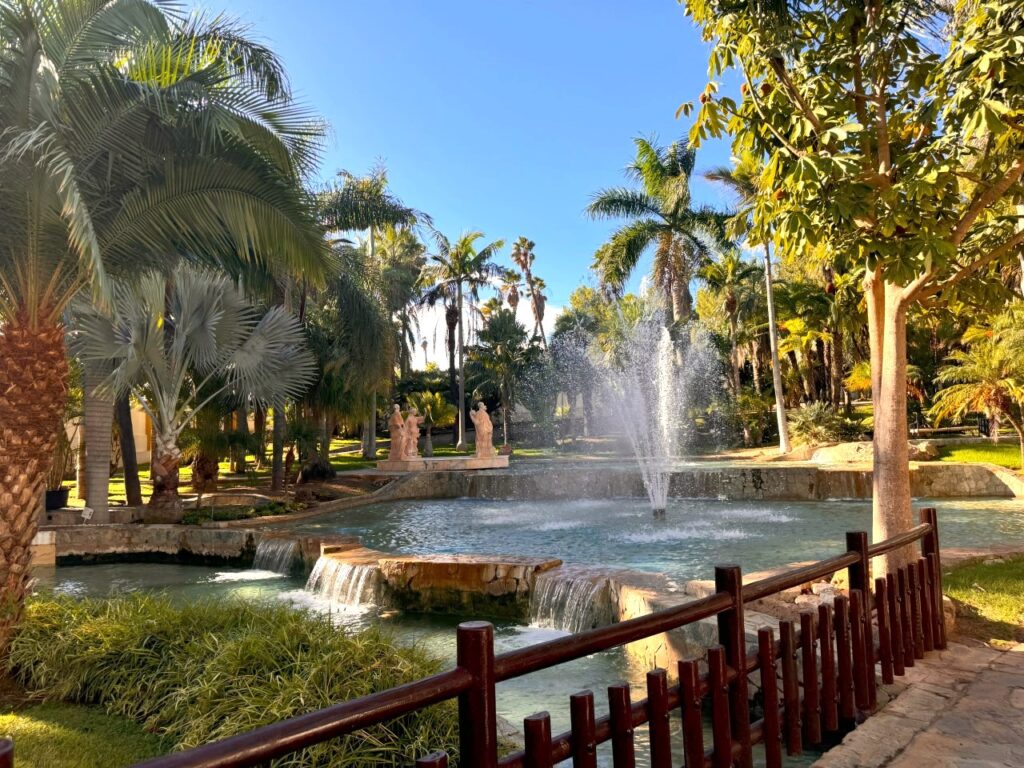
The vegetation surrounding the springs both protect them and give a use to the land; moreover, the water makes the botanical garden luxurious, with fountains and small cascades all over; a stark contrast to the usually dry landscape of the south of Spain. The complex is comprised by the remains of the former mill (now the Museum Molino de Inca), the botanical garden itself, with some centennial trees and thousands of species of plants, several birds and a Japanese garden, besides the water springs.
Table of Contents
Access to the Botanical Garden Molino de Inca
The arch that marks the access to the Botanical Garden is shown above and in the image below:
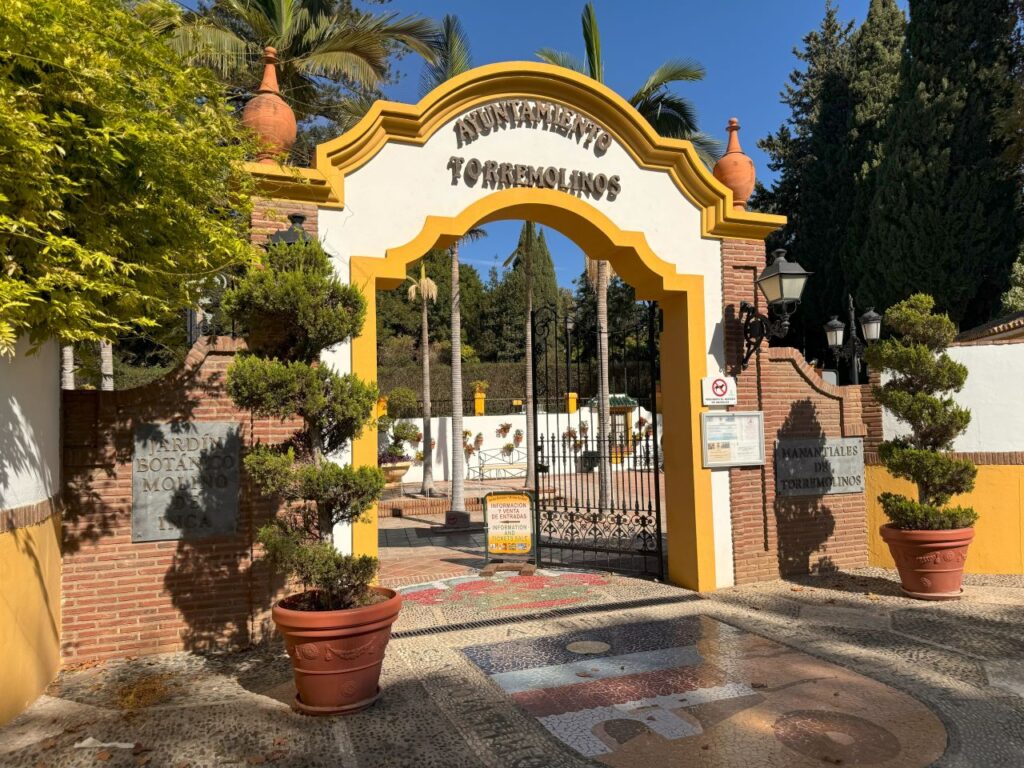
The entrance arch seen from inside of the Botanical Garden:

In this inviting coutyard there are fountains, benches and the main building, which used to house the mill that names the complex. Nowadays, this building hosts both the ticket office (taquilla) and the Molino de Inca Museum.
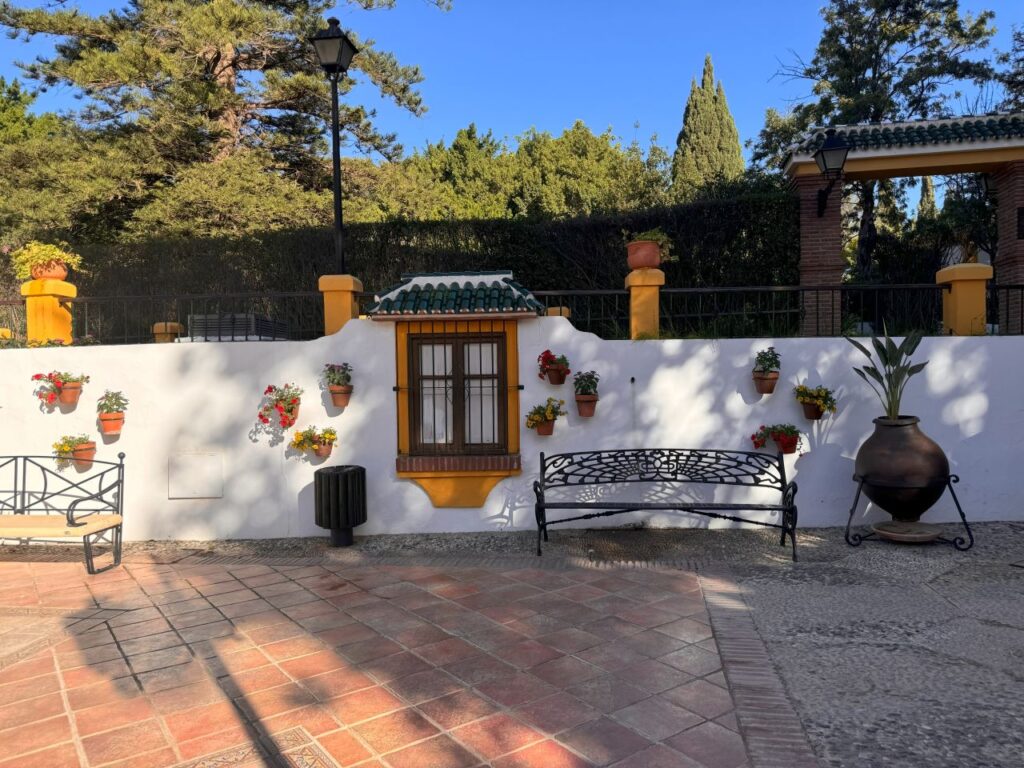


Above, a few images of the entrance area; below, the map of the Molino de Inca complex.
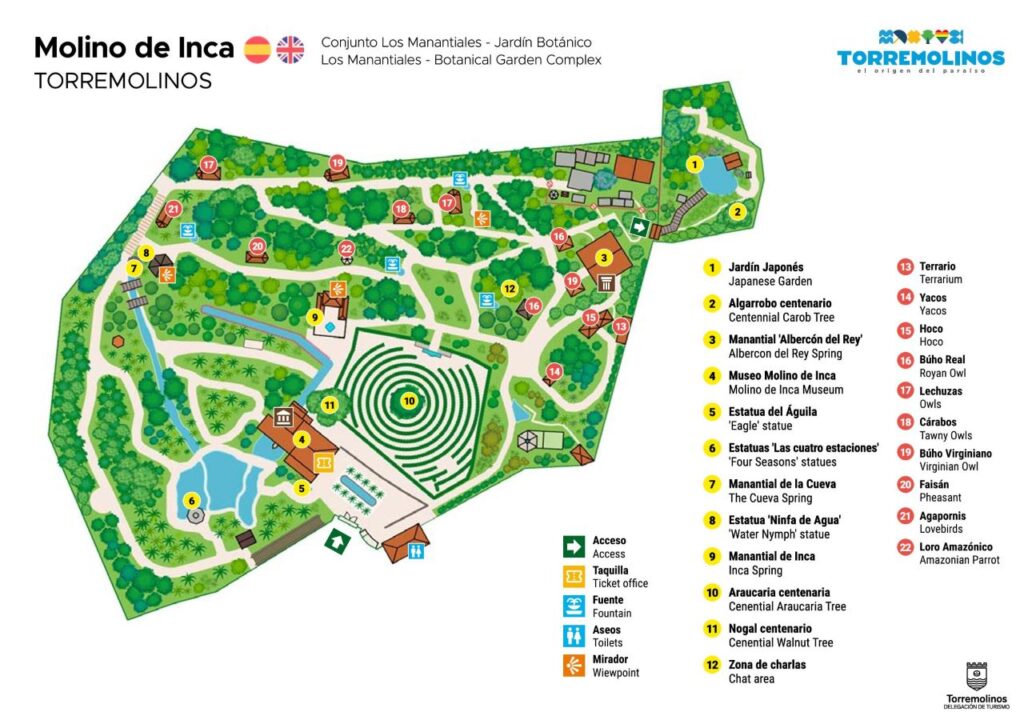
Museum Molino de Inca
The beautiful building at the entrance is the antiguo Molino de Inca, or old Inca Mill. It’s named ‘Inca’ after the former owner, Don Joseph de Inca Méndez de Sotomayor, that used to grind cereals here, using water as a power source. The Inca Mill was the first mill of Torremolinos, a town where mills grew to be so important it became part of the name of the of the town!
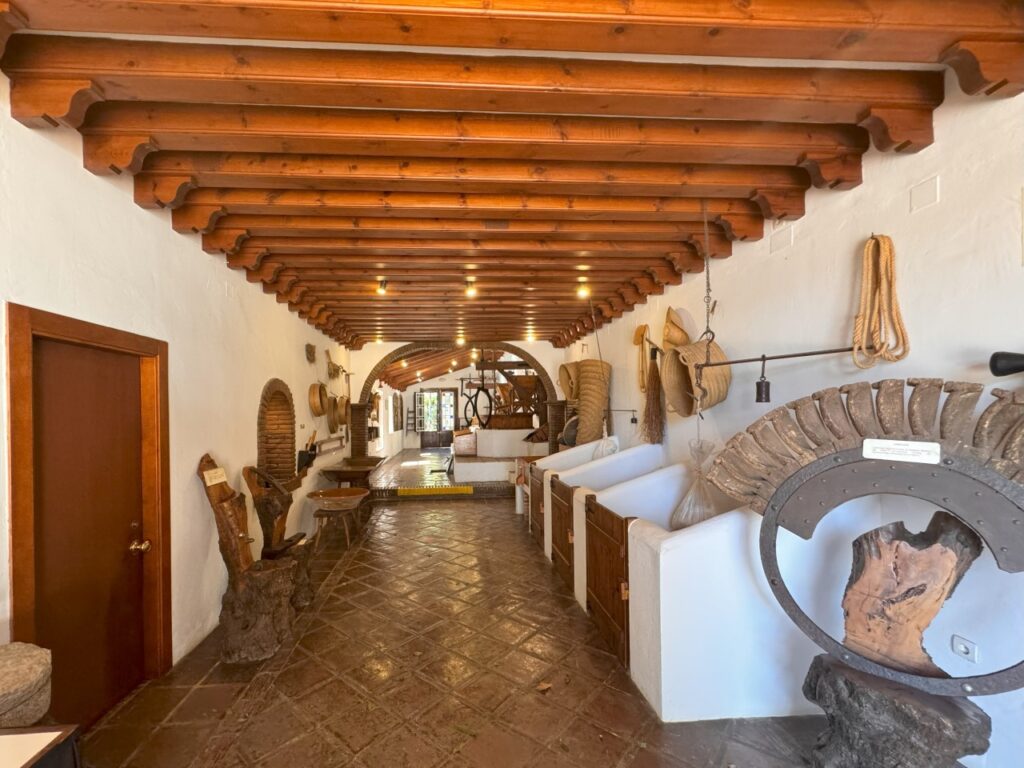
This small museum is comprised of two main rooms: one where pieces of the old mill are in display, and a second room full of dioramas explaining how a stone mill works. These dioramas are interactive: clicking on the buttons close to each display sets the diorama moving – interesting for adults and kids.
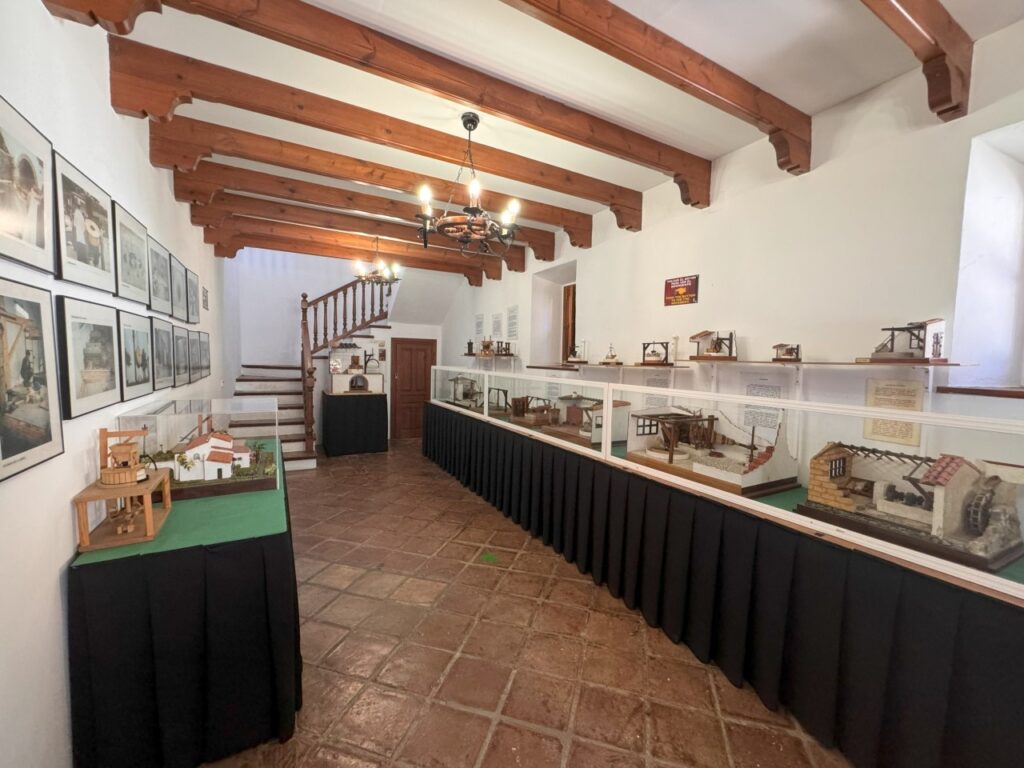
It is also possible to access the upper floors of the building, that have a few antique furniture items and offer beautiful views of the gardens.

Botanical Garden
The Botanical Garden is an oasis of green and peace with a variety of viewpoints and resting areas from where to enjoy the singing of the birds and the flow of water, present everywhere in the complex. It hosts hundreds of species of palm trees, which one can discover along well designed and well maintained paths.

The three water springs (manantiales) of Torremolinos are in the Botanical Garden, though direct access to them is (understandably) limited. Below, the Manantial de la Cueva (Cueva Spring):
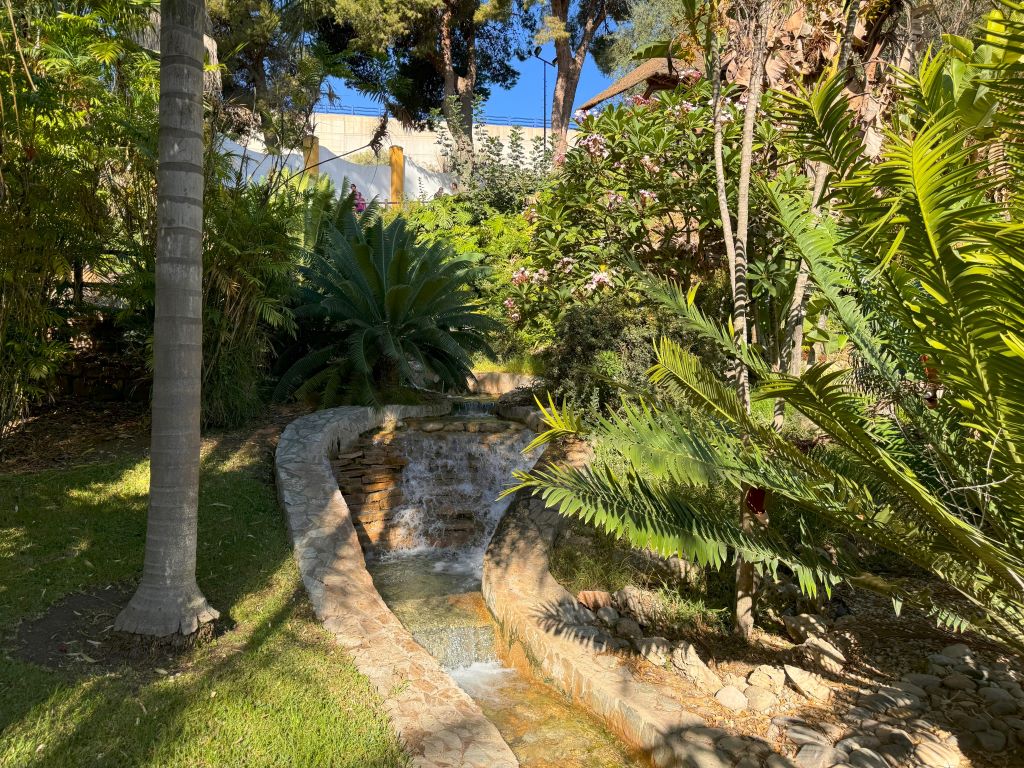
This spring supplies the main fountain of the Botanical Garden:
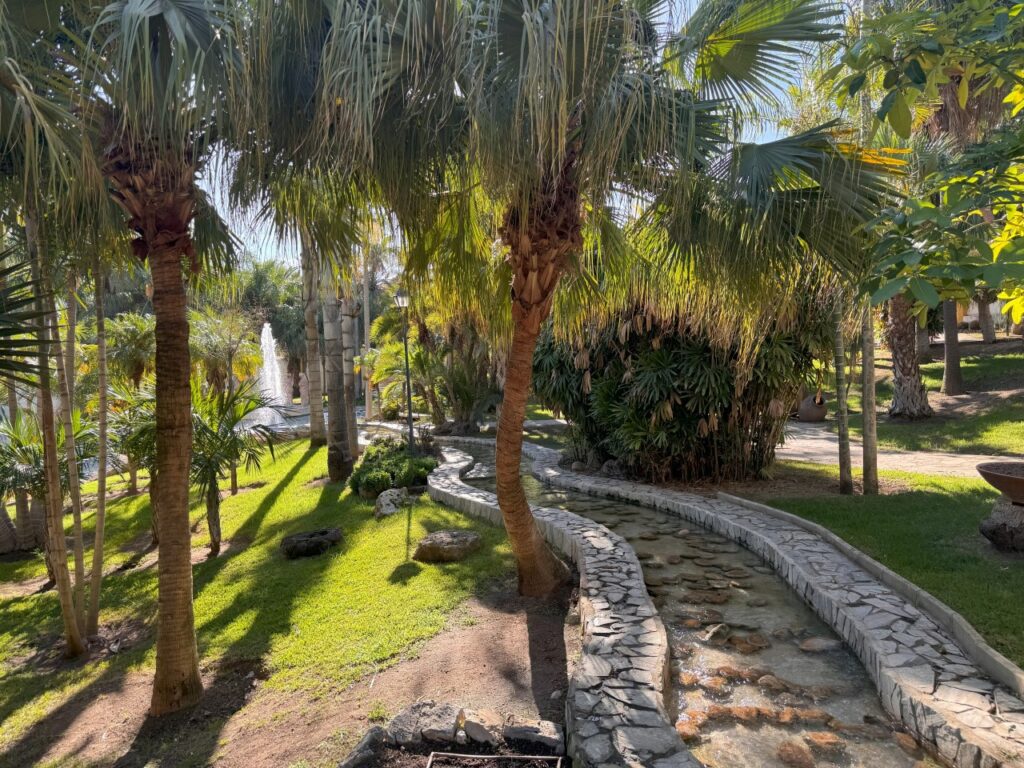


Animals’ area
The upper area of the Botanical Garden features a small collection of caged animals, adding an unexpected element to the visit. The presence of these animals—mainly birds and a few other species— offers an additional layer of interest for visitors, particularly children. The enclosures house a variety of species such as parrots, owls and other exotic birds. Although some visitors may find the animal cages a bit out of place in a botanical setting, they provide an opportunity to observe wildlife up close, contributing to the garden’s overall diversity of attractions.
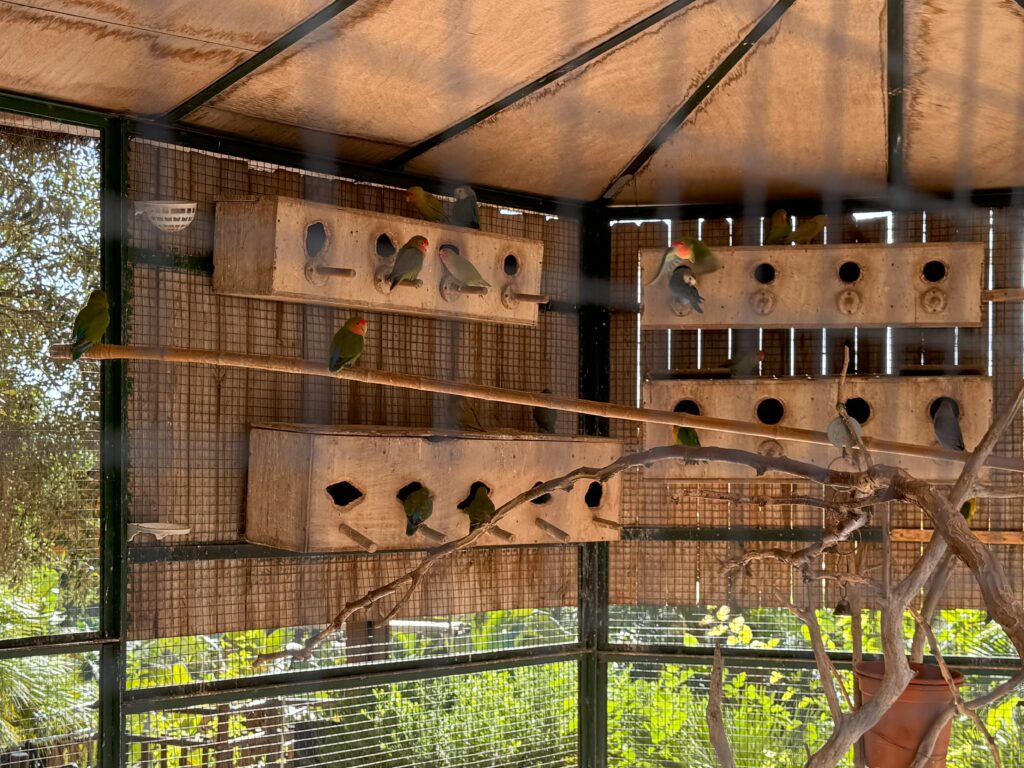

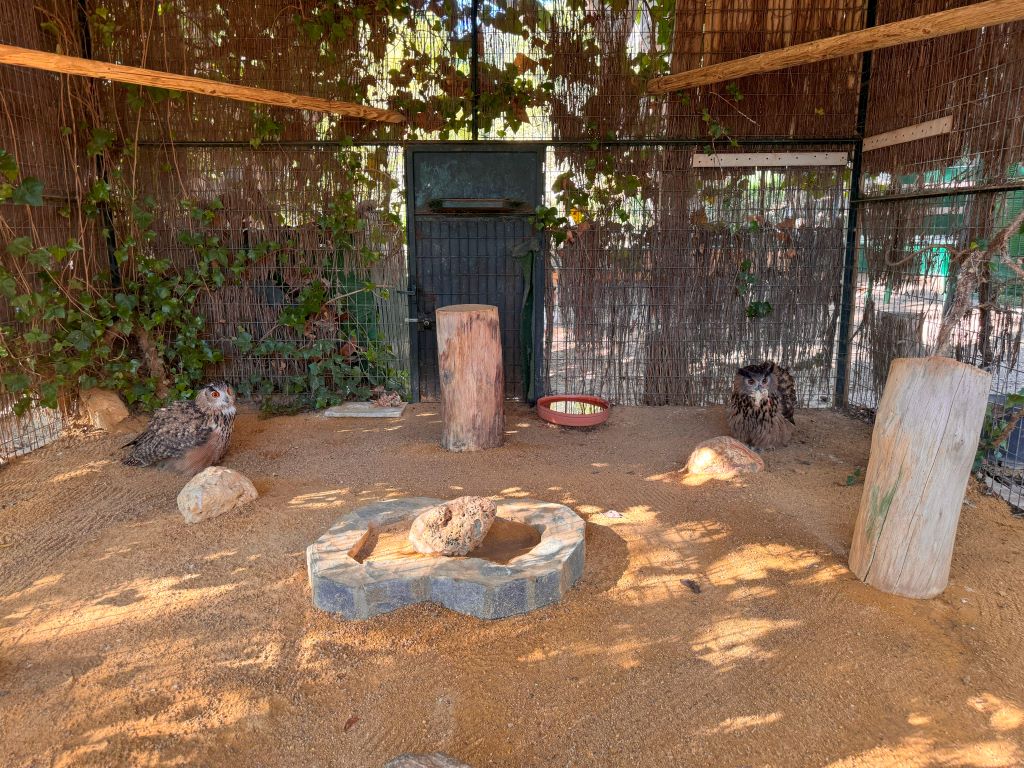
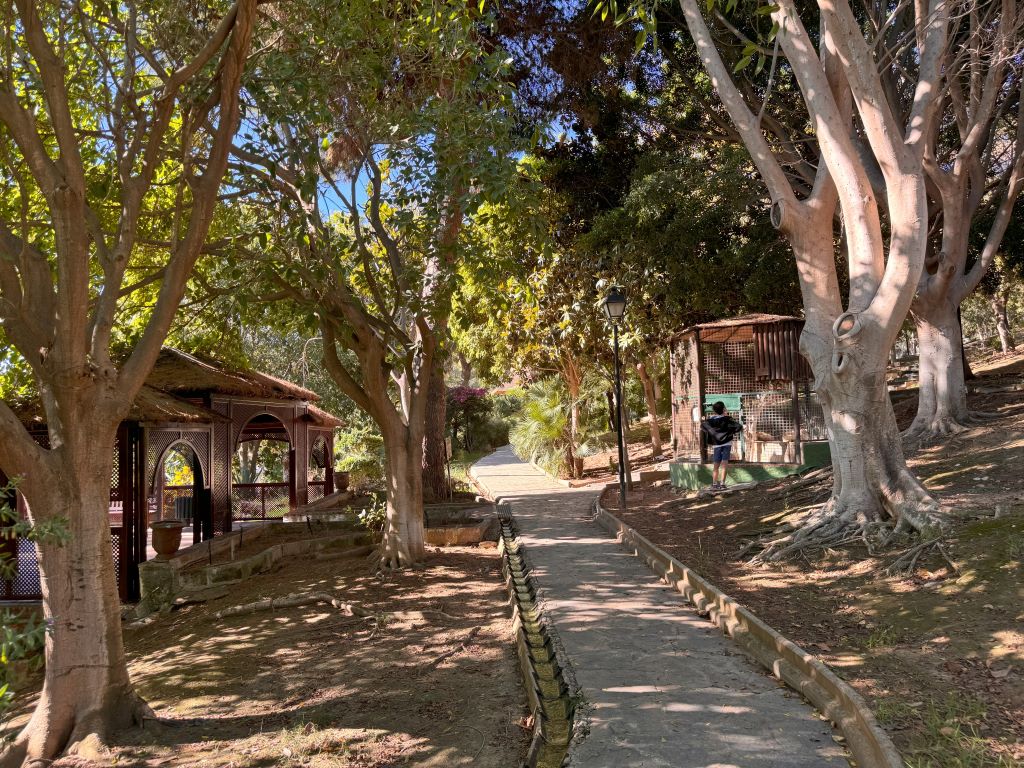
Viewpoints
The Botanical Garden Molino de Inca is home to several scenic viewpoints that offer stunning views of the lush greenery.
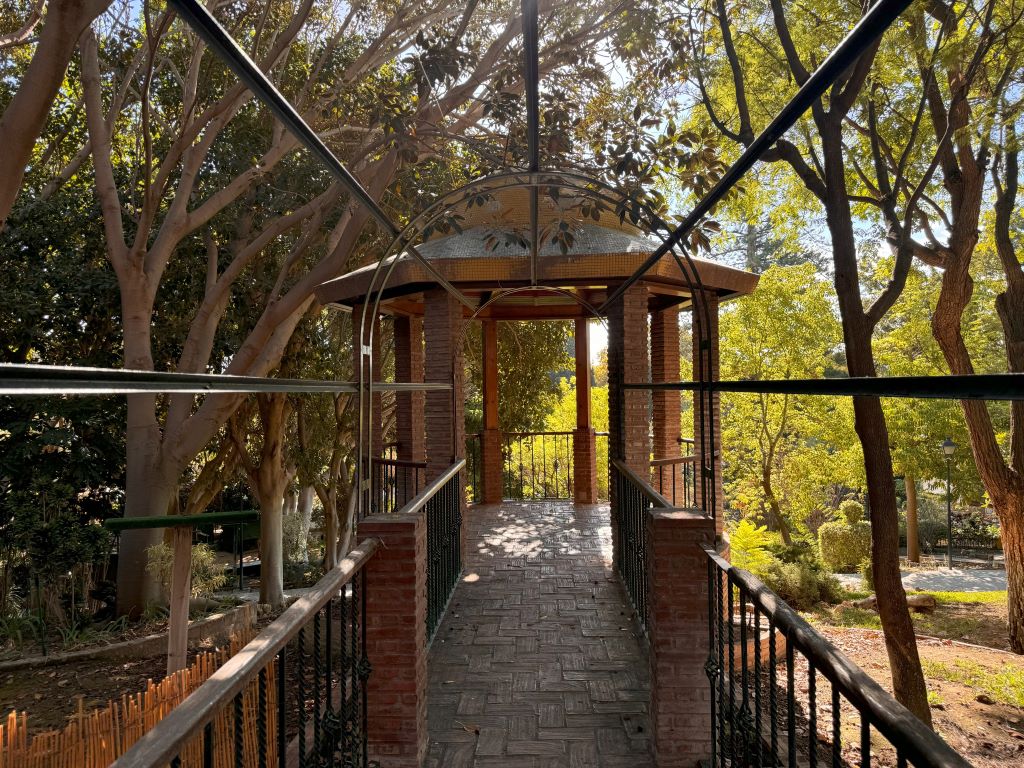
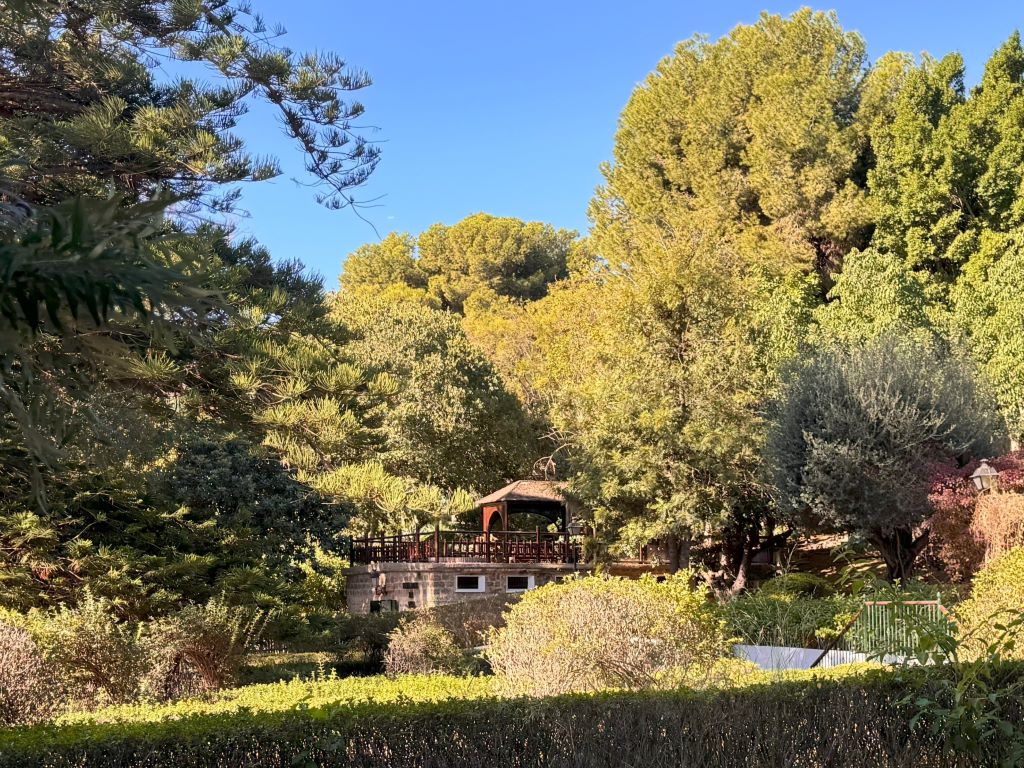
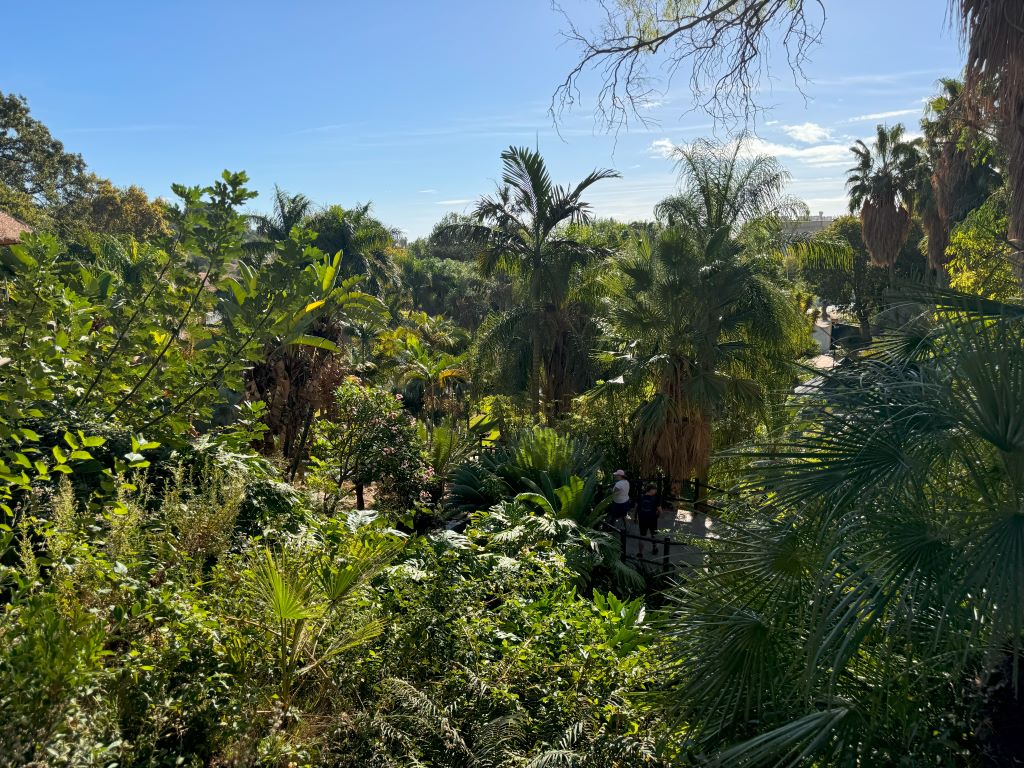
The Maze
The maze is easy to navigate and more suitable for a casual stroll than a challenging puzzle. While it doesn’t offer the complexity of larger mazes, it adds a playful touch to the garden and is enjoyable. Positioned within the beautiful and peaceful setting of the garden, the maze complements the overall atmosphere of relaxation and nature appreciation.
The area of the maze has two trees that are over a hundred years old, both pictured in the image below. They are so tall that to see them in full, I had to go to one of the viewpoints! Next, a detail of the immense trunk of the pine (araucaria), in the center of the maze; people for scale…
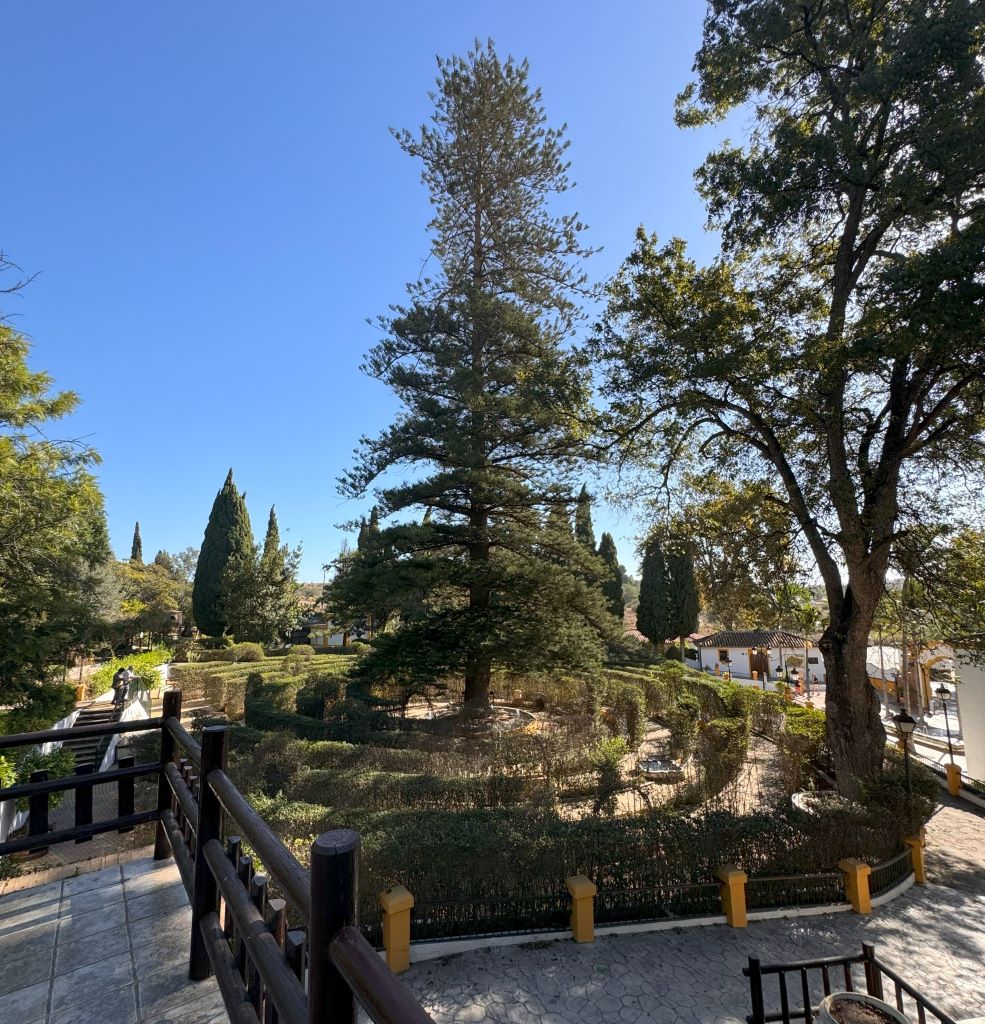
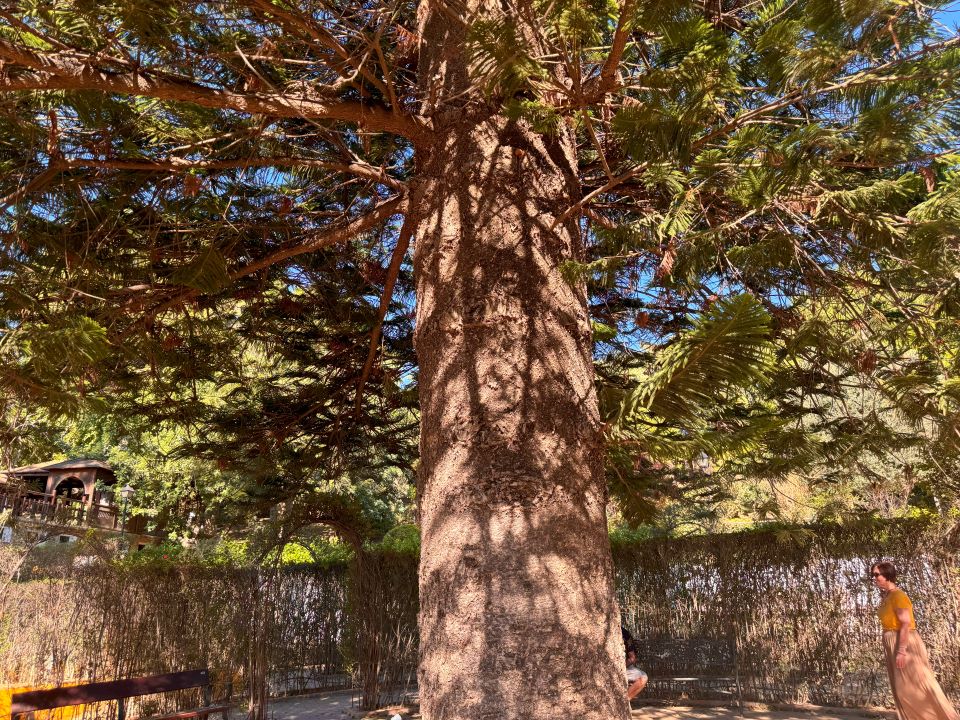
Japanese garden
The Japanese Garden in the Molino de Inca Botanical Garden is a serene and beautifully crafted space that embodies traditional Japanese aesthetics.
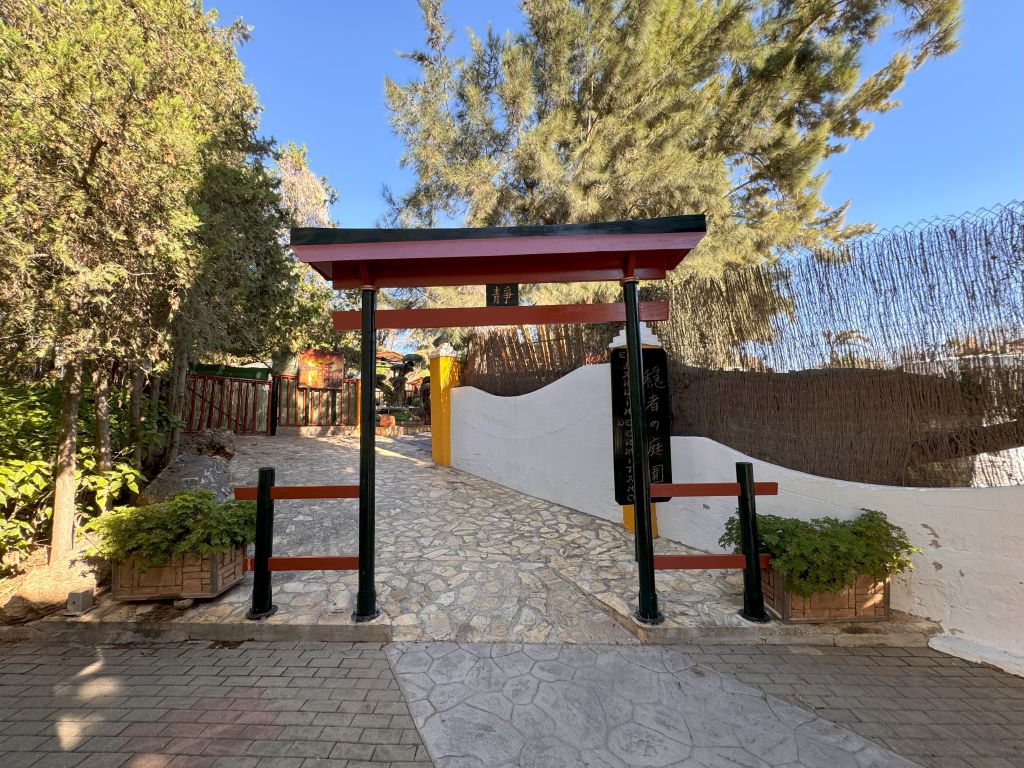
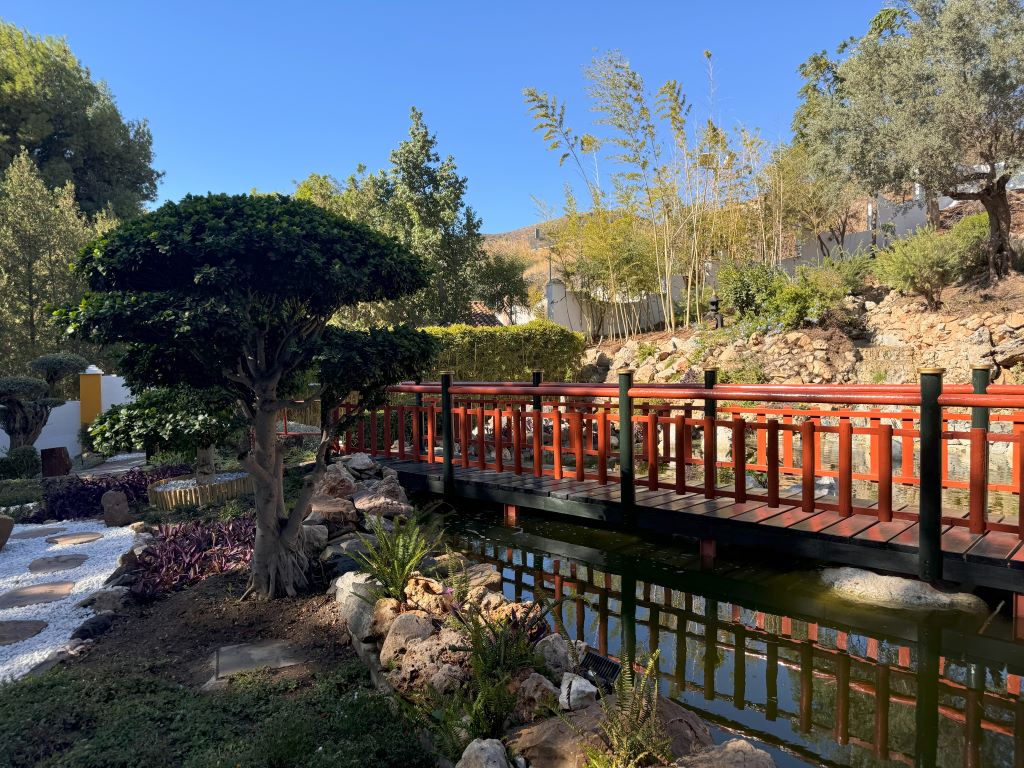
It features classic elements such as a wooden bridge, a koi pond and carefully arranged rocks, framed by meticulously pruned trees. This section stands out for its attention to detail.
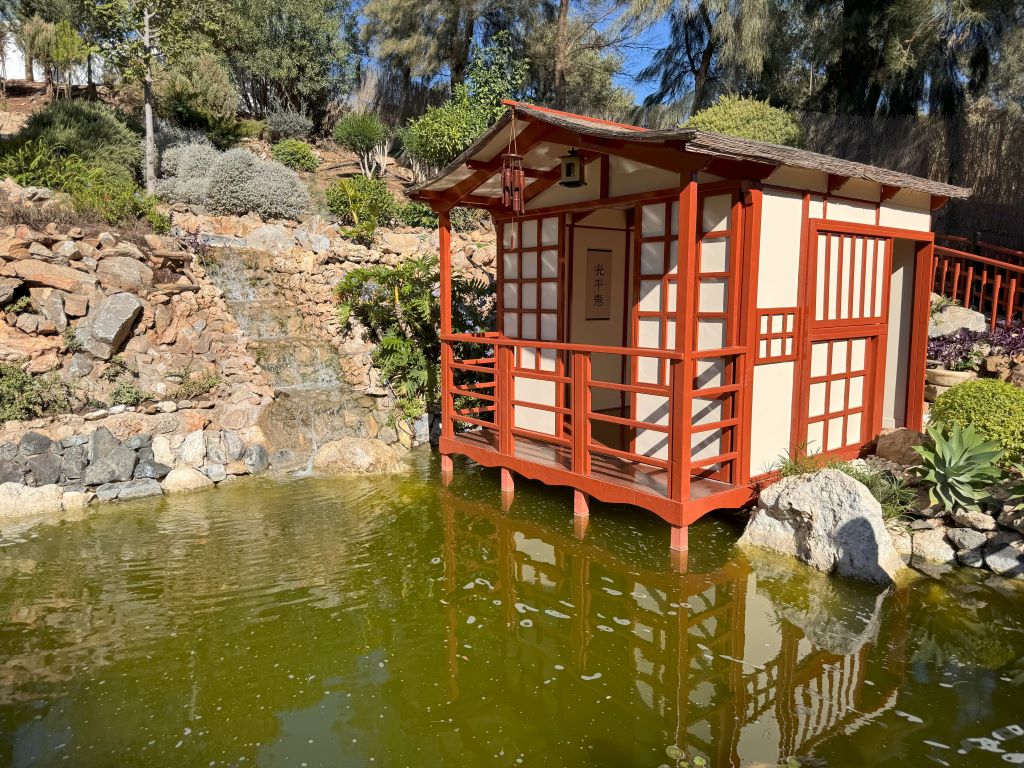
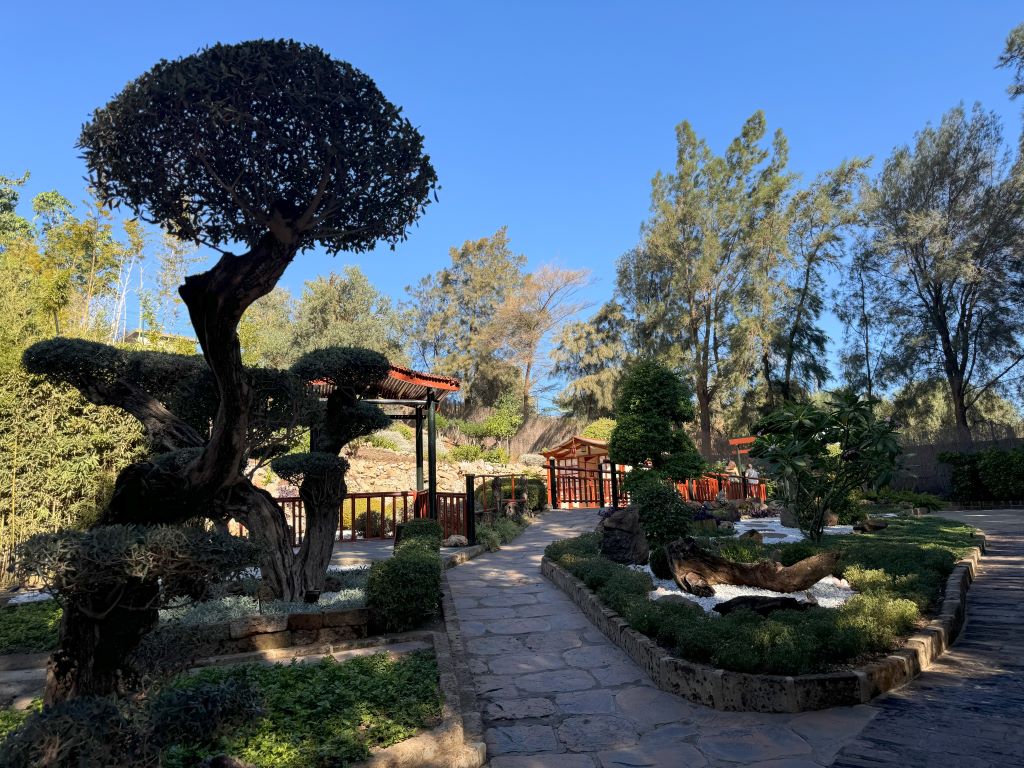
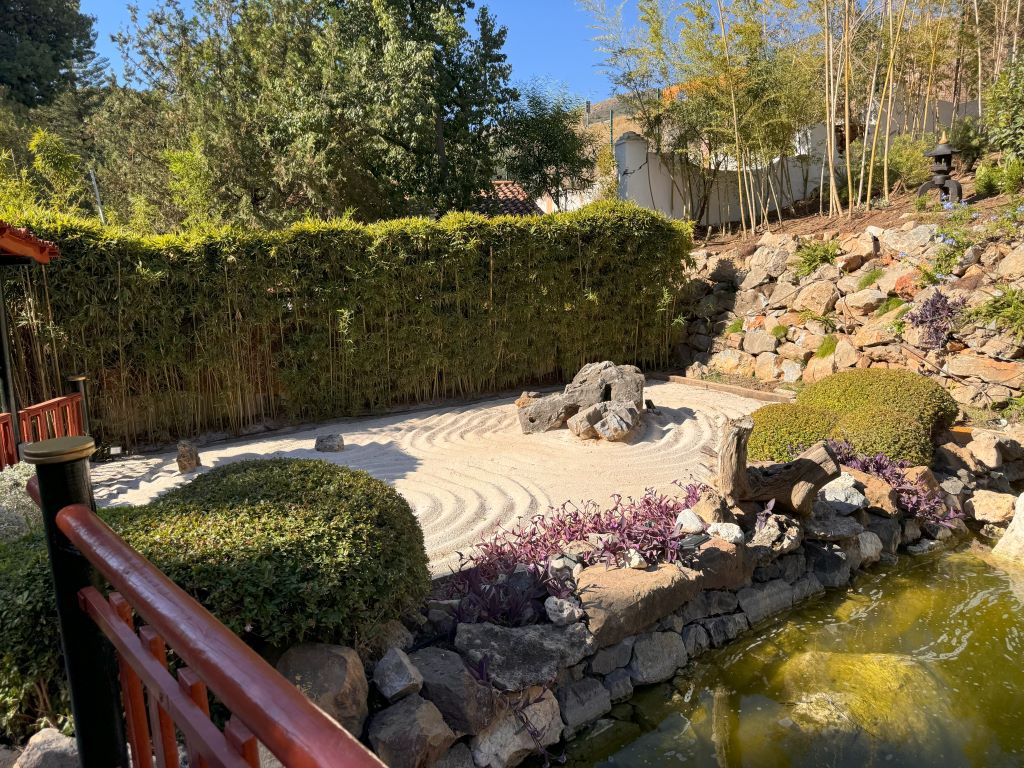
How to get there
The best way to get to Molino de Inca is by car. You can get by train up to Montemar Alto Station and get a taxi or Uber from there; it is possible to walk from Montemar Alto, too, but it would be about half an hour walk mostly under the sun.
You can park outside the Molino de Inca, in the large paved area right by the entrance. As this location is a bit distant from the city, there isn’t much competition for these parking spaces; finding a spot should not be a problem.
Prices and opening times
According to Turismo Torremolinos, the Molino de Inca is open every Tuesdays to Sundays (closed on Mondays), from 10 am until 06 pm, from September 15 to June 14 and from 10 am until 9 pm from June 15 to September 14. It may change or be closed on holidays, so it’s worth checking the Town Hall page ahead of planning. General admission currently costs 3 euros, with discounts for residents of Torremolinos; it’s free for seniors and for kids up to 12 years old.
Impressions and Conclusion
Molino de Inca is a great place to visit, and even better with kids – I went there with Kiddo and we had a blast. He was impressed by the Japanese Garden and very interested in the animals; in the museums, the fact that the dioramas moved by pressing buttons was quite a highlight of our visit. We went in the morning and by car, and spent about 1.5 to 2 hours in total, which in my opinion is enough time to visit the complex of the Molino de Inca.
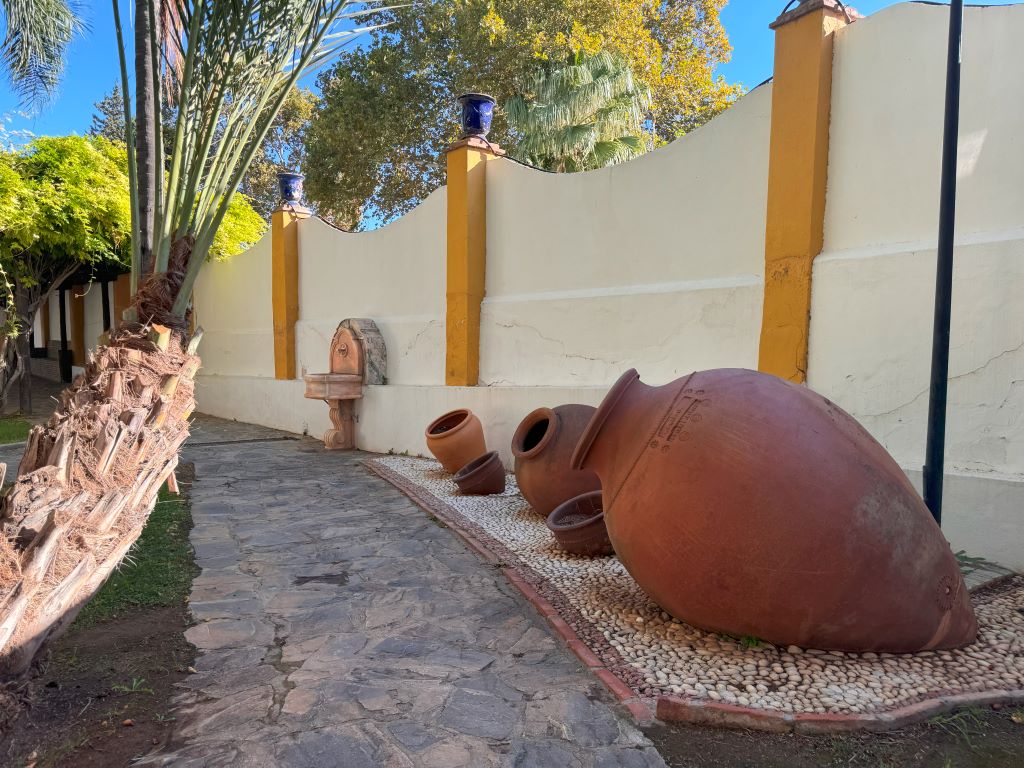
The area is not so big that it would be tiring and has enough variation and surprises for the size. There are fountains, running water, a maze, beautiful viewpoints, a Japanese Garden, an interactive museum and an area with caged animals. I have mixed feelings about this last part, though; I don’t like the idea of caged anything, but the animals are well cared for and kids really enjoy it; this was Kiddo’s favorite part – in particular, one of the parrots that could say Hola!
In my opinion, the complex had plenty of surprises to keep us well entertained. Despite it being called a botanical garden, the plants did not grab our attention so much; it felt like a well taken care, beautiful and lush garden, but it didn’t quite stand out as a display of different plants. I guess that is both because of the many other attractions that caught our attention and because the vegetation displayed is mostly evergreen and very well integrated to the area.
There is plenty of shadows and benches to sit enjoying the view or to rest during the visit; there are WCs too, right in the entrance. There isn’t a place to eat, though, and nowhere to buy even a water, so it is advisable to bring some along.

It is becoming hard to entertain 10 years old Kiddo nowadays, so the fact that even he enjoyed the visit really says a lot about how interesting the place is. Next time I have visitors, I’ll certainly take them to Torremolino’s Molino de Inca, and I thoroughly recommend going there if you haven’t been yet.
Next: Los Alamos Beach in Torremolinos

